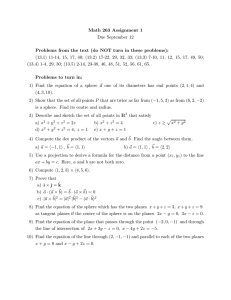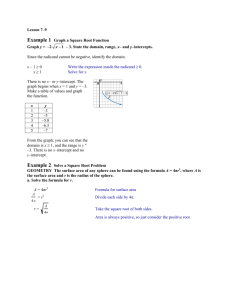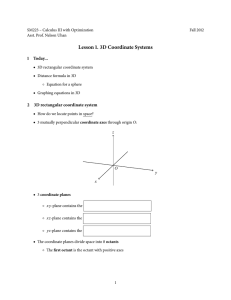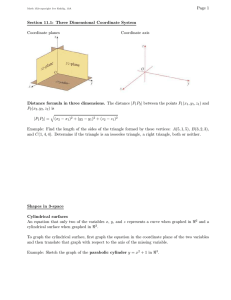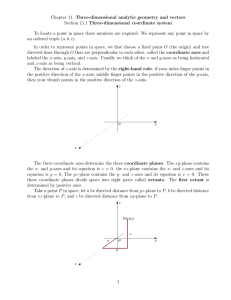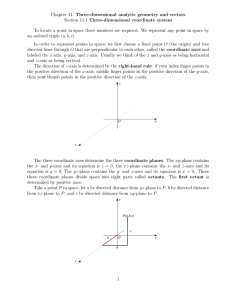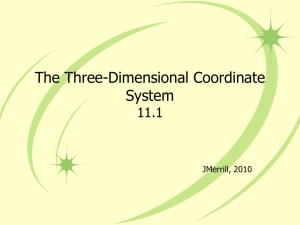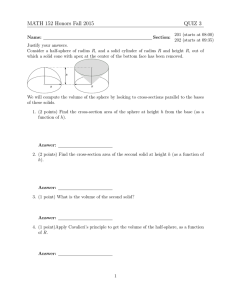Section 11.1: Three-Dimensional Coordinate Systems
advertisement
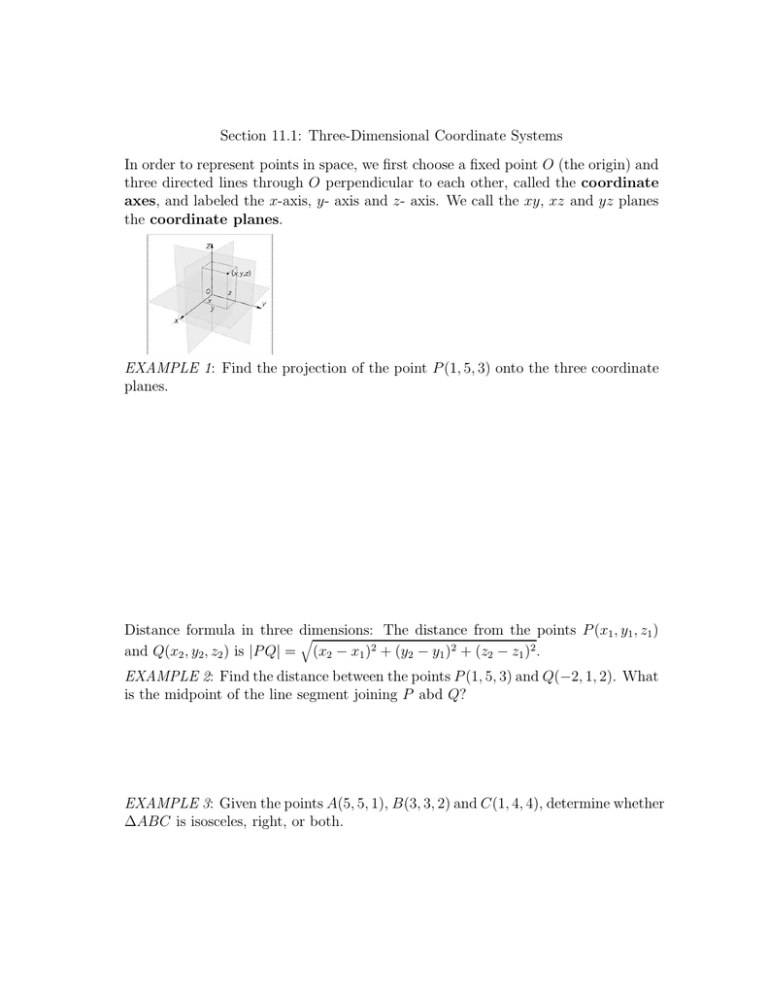
Section 11.1: Three-Dimensional Coordinate Systems In order to represent points in space, we first choose a fixed point O (the origin) and three directed lines through O perpendicular to each other, called the coordinate axes, and labeled the x-axis, y- axis and z- axis. We call the xy, xz and yz planes the coordinate planes. EXAMPLE 1: Find the projection of the point P (1, 5, 3) onto the three coordinate planes. Distance formula in three dimensions: The distance from the points P (x1 , y1 , z1 ) q 2 and Q(x2 , y2, z2 ) is |P Q| = (x2 − x1 ) + (y2 − y1 )2 + (z2 − z1 )2 . EXAMPLE 2: Find the distance between the points P (1, 5, 3) and Q(−2, 1, 2). What is the midpoint of the line segment joining P abd Q? EXAMPLE 3: Given the points A(5, 5, 1), B(3, 3, 2) and C(1, 4, 4), determine whether ∆ABC is isosceles, right, or both. EXAMPLE 4: Find the equation of the sphere with radius 3 and center (3, 2, 5). What is the intersection of this sphere with the three coordinate planes? EXAMPLE 5: Find the center and radius of the sphere x2 + y 2 + z 2 = 6x − 4y + 10z. EXAMPLE 6: Find the sphere with center (2, −3, 6) that touches the xy plane. EXAMPLE 7: Describe the following regions in the dimension indicated. a.) x = 4 in R2 and R3 b.) x2 + y 2 ≤ 4 in R2 and R3 c.) xz = 0 in R3 d.) z ≤ 0 in R3 e.) 1 ≤ x2 + y 2 + z 2 ≤ 25 in R3
